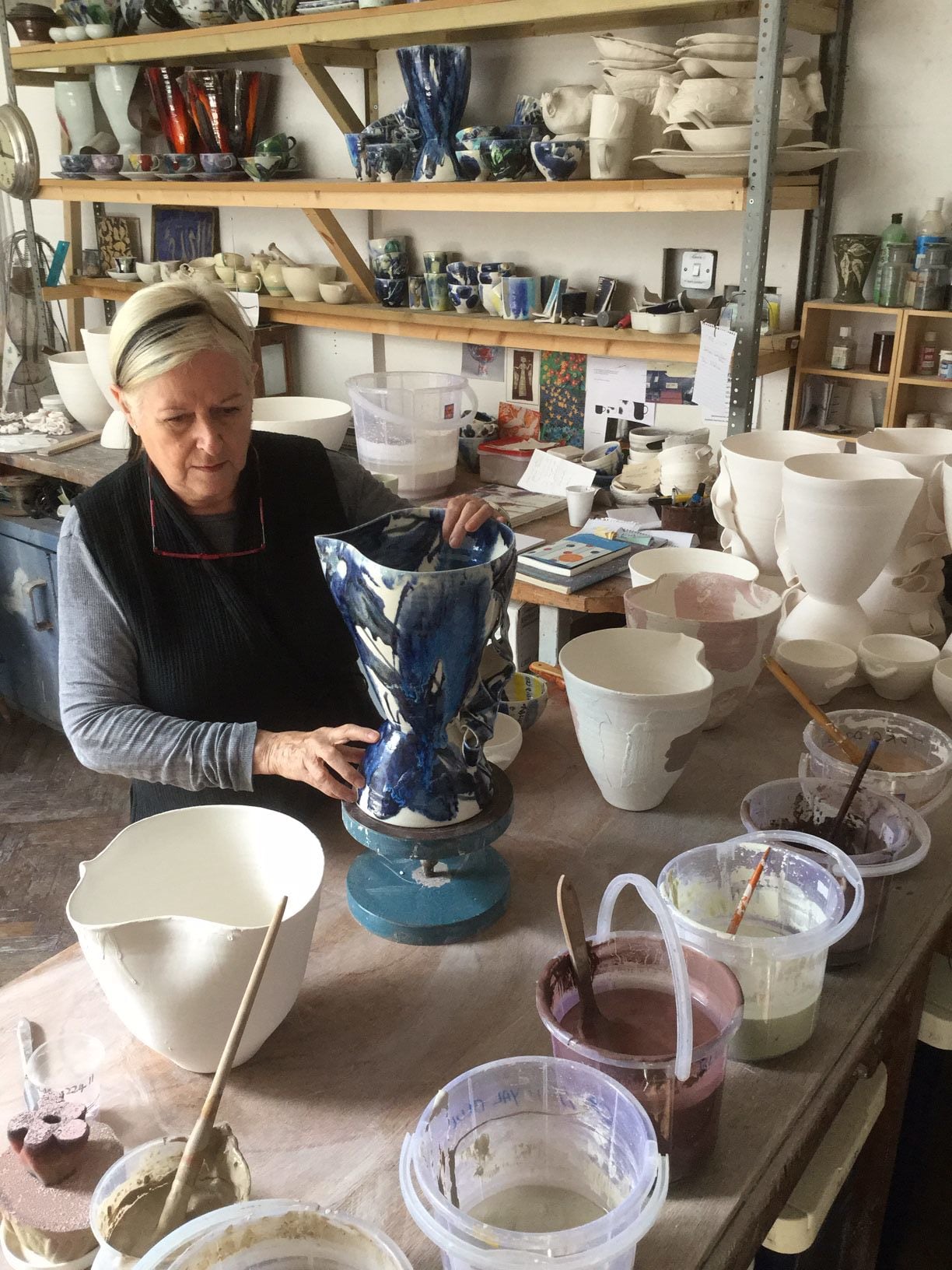Janice Tchalenko trained as a studio potter in the late ‘60s. For ten years she produced hand thrown tableware in the ‘Leach’ tradition, but then introduced new shapes and bright colours to set a whole new agenda for the studio pottery movement.
In the early 1980s’ Next Interiors asked her to design a range of giftware for their new shops, and at the same time she became chief designer for Dartington Pottery (1984-2010), creating their signature ranges in high fired reduction stoneware. She also worked with Designers Guild on a range of fabrics based on her ceramic surface patterns.
With Dartington Pottery she has won the ‘Manchester Prize for Art in Production’, and the Radio 4 Enterprise Award, for ‘Small Business of the Year’. She was also the winner of the Laura Ashley Fellowship.
Green Leaf Bowl, 2012.
Alongside making individual exhibition pieces, she has collaborated with painters and sculptors, exploring common ground between fine art and ceramics. One of her most fruitful projects was with the ‘Spitting Image’ workshop, the outcome being an exhibition ‘The Seven Deadly Sins’ at the Victoria and Albert Museum (1991).
Janice in her Forest Hill studio, 2015.
Her industrial work includes work with designers Queensberry/Hunt in Chaozhou South China, and with Poole Pottery, Stoke on Trent, both for the John Lewis Partnership. She is currently designing ranges for Royal Staffordshire in Stoke on Trent.
She has been a part-time lecturer at Camberwell School of Art and The Royal College of Art for most of her career, and is a Fellow of the Royal College of Art. Her work is included in many public collections both nationally and internationally.
After working for over 40 years in her East Dulwich studio, firing high fired reduction stoneware in a downdraft gas kiln, she has moved to a new studio in Forest Hill South London. Oxidised firings with an electric kiln is now opening a new chapter in her life.
The journalist and writer Rosemary Hill writes:
“It has been one of her achievements throughout her career, to nudge the boundaries slowly back from within. In particular, ideas about decoration – both the decoration of pots and pots as decorative objects in themselves – have taken on new and enjoyable meaning in her hands. Janice proved that ceramics could be colourful, even funny, without being trivial. Some feared she would lower the status of ceramics – but instead she raised the status of decoration”.


